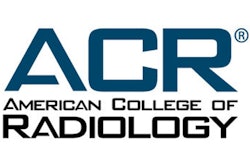Radiologists commonly use physical phantoms to assess image quality, but, more often than not, CT scans of phantoms do not necessarily reflect the imaging attributes of clinical images, according to researchers from Centre Hospitalier Universitaire Henri-Mondor in Creteil.
"Hence, the purpose of this study was to develop a method quantifying noise texture and magnitude features of clinical CT images ... making a more direct link between radiologist perception of image quality and quantitative metrics," Hugo Pasquier told AuntMinnie.com.
The researchers developed an analytical tool that obtains metrics on noise texture and magnitude by measuring the global noise power spectrum of an image. They incorporated the tool into various iterative reconstruction techniques and then applied these now-enhanced algorithms to 10 chest and abdominal CT scans.
All of the techniques automatically assessed and reduced image noise, with model-based iterative reconstruction as the standout performer in terms of noise-reducing efficiency (p < 0.01), Pasquier noted.
"This method could be used to tailor and standardize CT protocols according to radiologists' preferences regarding noise characteristics across systems from various manufacturers," he said. "Such studies actually favor the cross-linking between radiologists and physicists, both dedicated to the improvement of image quality."



















